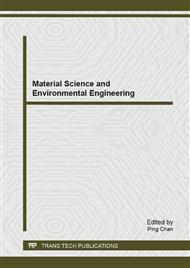p.652
p.659
p.663
p.669
p.679
p.686
p.691
p.695
p.700
The Evaluation in Fuzzy Matter-Element Theory Based on Hybrid Weight
Abstract:
Because the personnel quality evaluation at home and abroad is mostly too subjective, it could not satisfy the requirement for the objective and effective evaluation, the fuzzy matter-element evaluation theory and realization based on the hybrid weight is proposed in this paper. The objective weight and subjective weight is Respectively proposed using the entropy method and the analytic hierarchy process, and the hybrid weight is formed by the objective weight and subjective weight using the weight coefficient,thus the model of fuzzy matter-element evaluation theory based on hybrid weight is constructed. This method Overcomes the drawback that the evaluation index weight is too subjective, solving the problem that the qualitative indicators in the evaluation process is difficult to accurately measure and describe, the combination of subjective and objective factors affect improves the accuracy of the evaluation. The experimental results show that, the evaluation accuracy of the method for railway maintainer is more than 90% , this method effectively improves the detection accuracy compared to other methods. It provides the managers with a set of effective evaluation system and method.
Info:
Periodical:
Pages:
679-685
Citation:
Online since:
May 2014
Authors:
Keywords:
Price:
Сopyright:
© 2014 Trans Tech Publications Ltd. All Rights Reserved
Share:
Citation:


